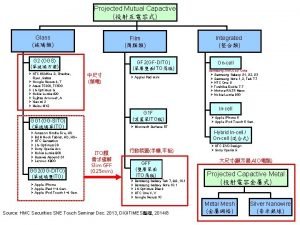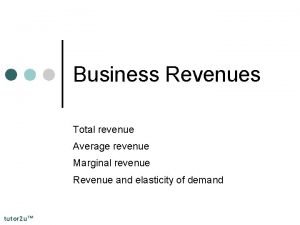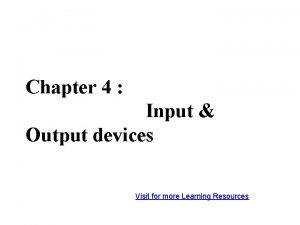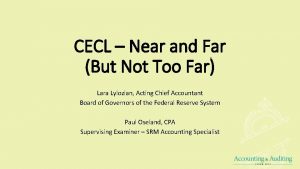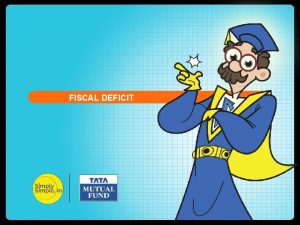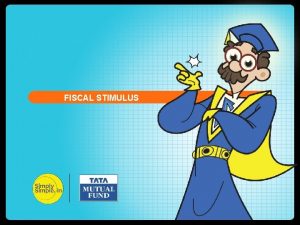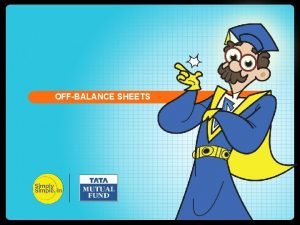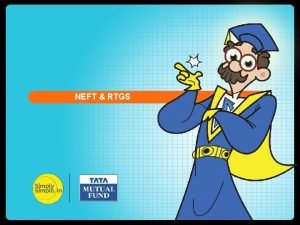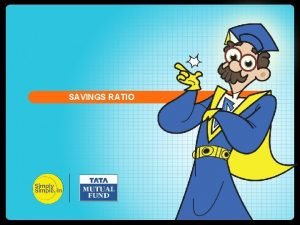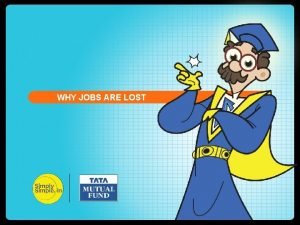TAPERING FISCAL FED REVENUE DEFICITS FISCAL REVENUE DEFICITS
























- Slides: 24

TAPERING FISCAL & FED REVENUE DEFICITS

FISCAL & REVENUE DEFICITS The Finance Minister announced a 4. 8 per cent revenue deficit and 6. 8 per cent fiscal deficit in the Union Budget this week! q So is that good or bad? q What does Fiscal Deficit mean in this context? q And how is it different from Revenue Deficit? q Let me explain these concepts to you in the next few slides…

First of all, what is a Deficit?

FISCAL & REVENUE DEFICITS q Simply put, a budget deficit occurs when an entity (often a government) spends more money than it takes in. q The opposite of a budget deficit, on the other hand, is a budget surplus.

Explaining Fiscal & Revenue Deficits – By Prof. Simply Simple

FISCAL & REVENUE DEFICITS q If we look at the Union Budget & our own household domestic budget, then we see a lot of similarities between them. q The way we grow our incomes, keep expenses in check and build appreciating assets will define our success as wealth creating households & countries.

FISCAL & REVENUE DEFICITS The government budgets are not very different either! q The household income, in the form of salaries or business income, is similar to tax revenues for the government. q Both the government and a household will spend on current consumption like electricity & telephone payments and to build assets like building a bridge or a house respectively.

FISCAL & REVENUE DEFICITS But what happens if there is any mismatch between the two? a) It leads the household to the bank to borrow money to bridge the income-expenditure gap. b) It leads the government to borrow, print more notes or/and sell some part of their state assets to private companies to bridge this gap. This is what the much-talked about ‘deficit’ is all about. Deficits in public finance include revenue and fiscal deficits.

FISCAL & REVENUE DEFICITS But what is Fiscal Deficit?

FISCAL & REVENUE DEFICITS q In developing countries such as ours, the expenses that the Government incurs are usually more than the income it makes. The difference or gap between the two is called a Fiscal Deficit. q Thus, the Fiscal Deficit is: Govt. 's total expenses – Govt. ’s total receipts

FISCAL & REVENUE DEFICITS So what are the types of Govt. expenses? q Revenue expenses: Revenue expenses are the day-to-day expenses: - salaries payable to the government employees - the expenses incurred in running various government departments, and so on q Capital expenses: Capital expenses include what is incurred for creating assets and improving infrastructure.

FISCAL & REVENUE DEFICITS And what are the types of Govt. receipts? q Revenue Receipts: Revenue receipts consist of tax collected by the government and other receipts consisting of interest and dividend on investments made by Govt. , fees and other receipts for services rendered by Govt. q Capital Receipts: Capital Receipts include Recoveries of Loans and disinvestment of Govt. ’s equity holdings in Public enterprises, etc.

FISCAL & REVENUE DEFICITS Now… q Many of us think that borrowing of any kind is bad, but that is not always the case. How? q When you borrow money to buy a house, you are investing in an asset which has the potential to grow substantially in the future. q Similarly, if the government borrows to build capital goods for the country like infrastructure, this borrowing can be termed as “good” borrowing.

FISCAL & REVENUE DEFICITS But the problem is about the “bad” borrowing which is when you borrow to pay for your current liabilities like your food bill, telephone bill, etc. through credit cards or personal loans

FISCAL & REVENUE DEFICITS q Similarly, if the government borrows to pay for current expenses like salaries of its employees, it is an indication that the government is not managing its finances prudently. This type of deficit or gap is called the Revenue Deficit. q Thus, the Revenue Deficit is: Revenue Expenses – Revenue Receipts

FISCAL & REVENUE DEFICITS However, in times of economic slowdown the government may need to borrow and put money in the hands of its citizens to revive the consumption cycle. This is something which may not apply to the home budget.

FISCAL & REVENUE DEFICITS Confused? ! Look at the graph below… Govt. Expenses Revenue Expenses Capital Expenses Govt. Receipts Tax Sources Non-tax Sources Revenue Receipts Capital Receipts FISCAL DEFICIT REVENUE DEFICIT Govt. 's Expenses – Govt. ’s Receipts Revenue Expenses – Revenue Receipts

FISCAL & REVENUE DEFICITS So what should the ideal numbers be? q The financially prudent number to this kind of deficit is zero. q If the revenue deficit is zero, then a fiscal deficit (like a home loan for us, also called the total borrowing of a government) of 3 per cent is good for the country. q Which brings us back to the numbers for India today - 4. 8 per cent revenue deficit and 6. 8 per cent fiscal deficit. q This large deficit is frowned upon.

FISCAL & REVENUE DEFICITS But is there more to these figures than meets the eye? q However, as seen earlier, in special circumstances a deficit may be the only way to dig a nation out of a slow-down or a recession. q Which is what this budget is aiming to do — it is trying to invest in asset creation as well as revive demand to climb back to 9 per cent growth.

FISCAL & REVENUE DEFICITS In other words, the spend is aimed at stimulating domestic demand & creating assets.

FISCAL & REVENUE DEFICITS To Sum Up q What: The Finance Minister announced a 4. 8 per cent revenue deficit and 6. 8 per cent fiscal deficit in the Union Budget! q Why: in special circumstances, a deficit may be the only way to dig a nation out of a slow-down or a recession. q So: The current budget is trying to invest in asset creation as well as revive demand to climb back to 9 per cent growth.

FISCAL & REVENUE DEFICITS Hope you have now understood the concept of Fiscal & Revenue Deficits

Do write to me at professor@tataamc. com

DISCLAIMER The views expressed in this lesson are for information purposes only and do not construe to be any investment, legal or taxation advice. The lesson is a conceptual representation and may not include several nuances that are associated and vital. The purpose of this lesson is to clarify the basics of the concept so that readers at large can relate and thereby take more interest in the product / concept. In a nutshell, Professor Simply Simple lessons should be seen from the perspective of it being a primer on financial concepts. The contents are topical in nature and held true at the time of creation of the lesson. This is not indicative of future market trends, nor is Tata Asset Management Ltd. attempting to predict the same. Reprinting any part of this material will be at your own risk. Tata Asset Management Ltd. will not be liable for the consequences of such action. Mutual Fund investments are subject to market risks, read all scheme related documents carefully.
 Tapering fed
Tapering fed Hedging and forward contracts
Hedging and forward contracts Tapering qe
Tapering qe Bur
Bur Continuous parenteral nutrition
Continuous parenteral nutrition Average
Average Fed ex
Fed ex Fed ramp
Fed ramp Is scanner input or output
Is scanner input or output A pistol with a clip fed mechanism
A pistol with a clip fed mechanism End fed zepp antenna
End fed zepp antenna Fed consulting
Fed consulting Cuckoo being fed
Cuckoo being fed Epreuve bts fed
Epreuve bts fed Negative corner fed room
Negative corner fed room Fed-batch
Fed-batch Fedex ship manager
Fedex ship manager What is user response in computer
What is user response in computer Fed state
Fed state Fed ex forms
Fed ex forms Lara lylozian
Lara lylozian Mary o'neill poet
Mary o'neill poet Palomar bullet antenna
Palomar bullet antenna Fed ramp
Fed ramp Fed state
Fed state
